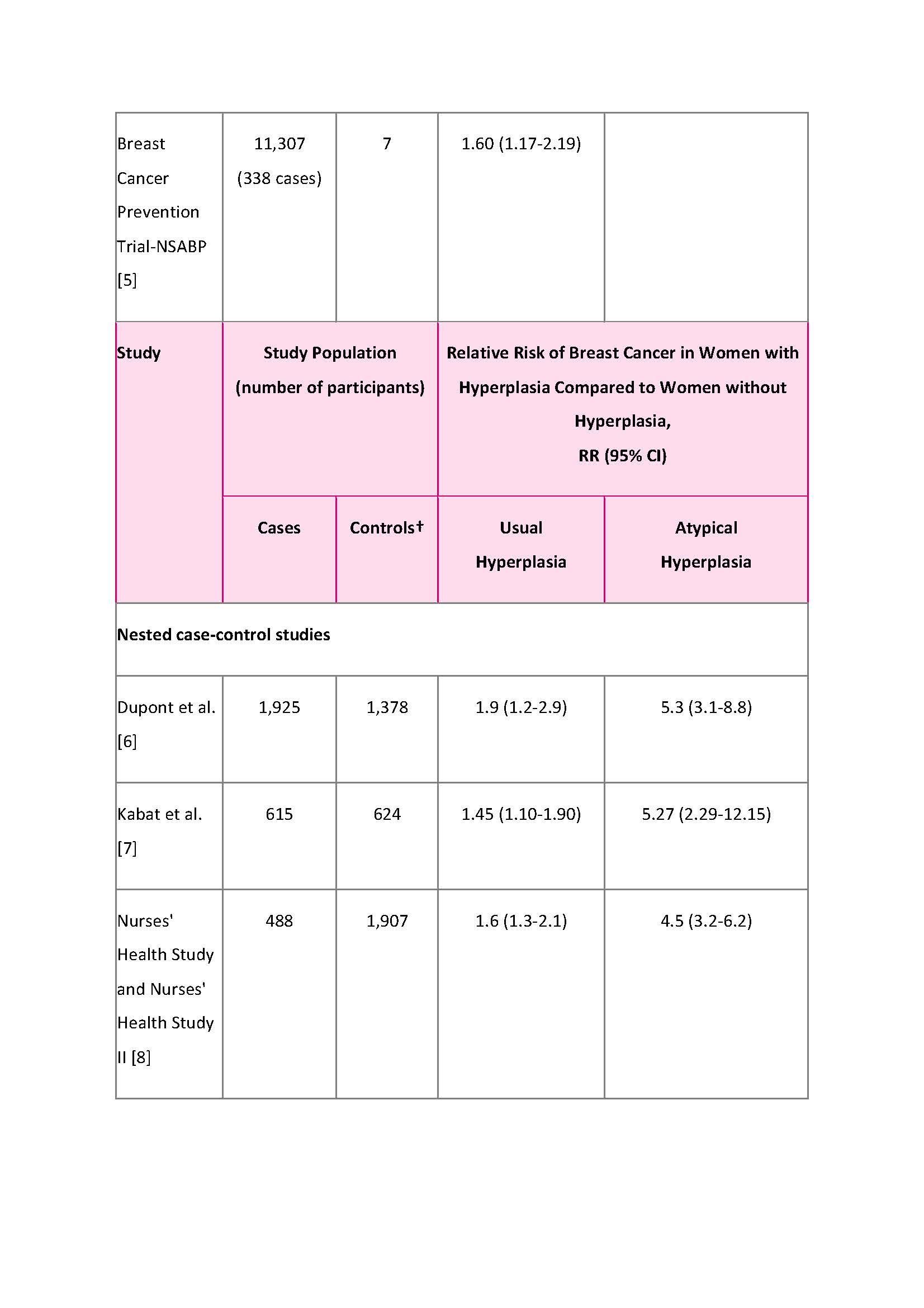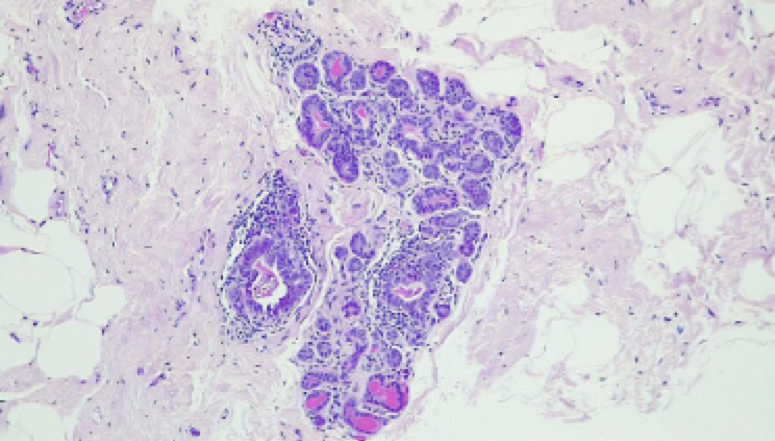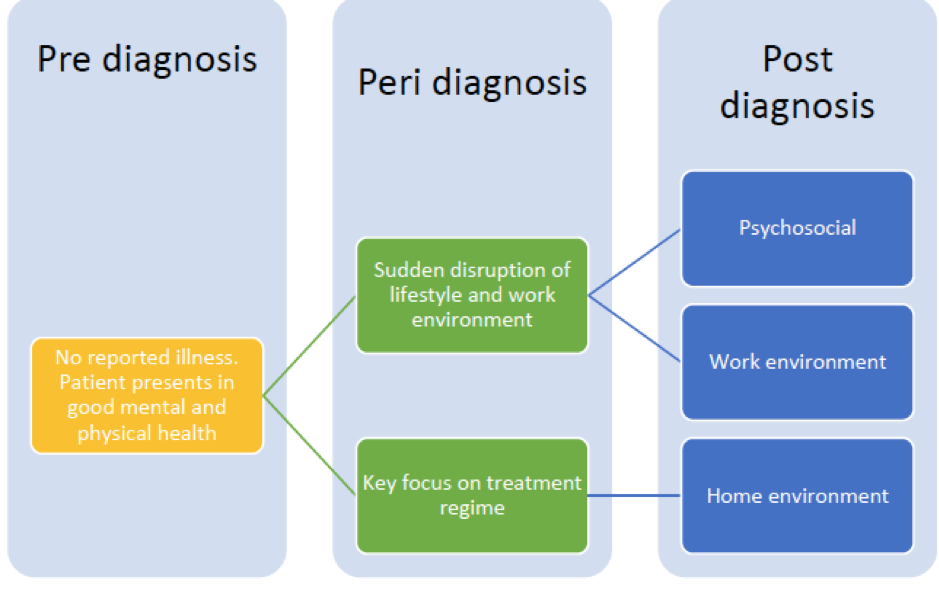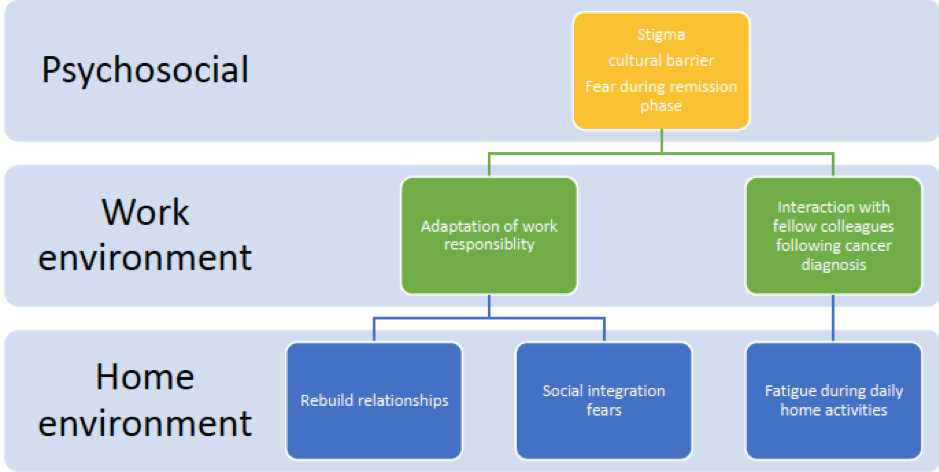[1]
Ameen F, Reda SA, El-Shatoury SA, Riad EM, Enany ME, Alarfaj AA. Prevalence of antibiotic resistant mastitis pathogens in dairy cows in Egypt and potential biological control agents produced from plant endophytic actinobacteria. Saudi journal of biological sciences. 2019 Nov:26(7):1492-1498. doi: 10.1016/j.sjbs.2019.09.008. Epub 2019 Sep 14
[PubMed PMID: 31762615]
[2]
McMullen ER, Zoumberos NA, Kleer CG. Metaplastic Breast Carcinoma: Update on Histopathology and Molecular Alterations. Archives of pathology & laboratory medicine. 2019 Dec:143(12):1492-1496. doi: 10.5858/arpa.2019-0396-RA. Epub
[PubMed PMID: 31765246]
[3]
Danino MA, El Khatib AM, Doucet O, Dao L, Efanov JI, Bou-Merhi JS, Iliescu-Nelea M. Preliminary Results Supporting the Bacterial Hypothesis in Red Breast Syndrome following Postmastectomy Acellular Dermal Matrix- and Implant-Based Reconstructions. Plastic and reconstructive surgery. 2019 Dec:144(6):988e-992e. doi: 10.1097/PRS.0000000000006227. Epub
[PubMed PMID: 31764635]
[4]
Schünemann HJ, Lerda D, Quinn C, Follmann M, Alonso-Coello P, Rossi PG, Lebeau A, Nyström L, Broeders M, Ioannidou-Mouzaka L, Duffy SW, Borisch B, Fitzpatrick P, Hofvind S, Castells X, Giordano L, Canelo-Aybar C, Warman S, Mansel R, Sardanelli F, Parmelli E, Gräwingholt A, Saz-Parkinson Z, European Commission Initiative on Breast Cancer (ECIBC) Contributor Group. Breast Cancer Screening and Diagnosis: A Synopsis of the European Breast Guidelines. Annals of internal medicine. 2020 Jan 7:172(1):46-56. doi: 10.7326/M19-2125. Epub 2019 Nov 26
[PubMed PMID: 31766052]
[5]
Kour A, Sharma S, Sambyal V, Guleria K, Singh NR, Uppal MS, Manjari M, Sudan M, Kukreja S. Risk Factor Analysis for Breast Cancer in Premenopausal and Postmenopausal Women of Punjab, India. Asian Pacific journal of cancer prevention : APJCP. 2019 Nov 1:20(11):3299-3304. doi: 10.31557/APJCP.2019.20.11.3299. Epub 2019 Nov 1
[PubMed PMID: 31759352]
[6]
Carvalho MJ, Subtil S, Rodrigues Â, Oliveira J, Figueiredo-Dias M. Controversial association between polycystic ovary syndrome and breast cancer. European journal of obstetrics, gynecology, and reproductive biology. 2019 Dec:243():125-132. doi: 10.1016/j.ejogrb.2019.10.011. Epub 2019 Oct 15
[PubMed PMID: 31693949]
[7]
Lundberg FE, Iliadou AN, Rodriguez-Wallberg K, Gemzell-Danielsson K, Johansson ALV. The risk of breast and gynecological cancer in women with a diagnosis of infertility: a nationwide population-based study. European journal of epidemiology. 2019 May:34(5):499-507. doi: 10.1007/s10654-018-0474-9. Epub 2019 Jan 9
[PubMed PMID: 30623293]
Level 2 (mid-level) evidence
[8]
Gopalani SV, Janitz AE, Martinez SA, Gutman P, Khan S, Campbell JE. Trends in Cancer Incidence Among American Indians and Alaska Natives and Non-Hispanic Whites in the United States, 1999-2015. Epidemiology (Cambridge, Mass.). 2020 Mar:31(2):205-213. doi: 10.1097/EDE.0000000000001140. Epub
[PubMed PMID: 31764279]
[9]
Rosa M, Agosto-Arroyo E. Core needle biopsy of benign, borderline and in-situ problematic lesions of the breast: Diagnosis, differential diagnosis and immunohistochemistry. Annals of diagnostic pathology. 2019 Dec:43():151407. doi: 10.1016/j.anndiagpath.2019.151407. Epub 2019 Sep 3
[PubMed PMID: 31634810]
[10]
Mullooly M, Nyante SJ, Pfeiffer RM, Cora R, Butcher D, Sternberg L, Aiello Bowles EJ, Fan S, Figueroa JD, Weinmann S, Hoover RN, Brinton LA, Berrington de Gonzalez A, Glass A, Sherman ME, Gierach GL. Involution of Breast Lobules, Mammographic Breast Density and Prognosis Among Tamoxifen-Treated Estrogen Receptor-Positive Breast Cancer Patients. Journal of clinical medicine. 2019 Nov 4:8(11):. doi: 10.3390/jcm8111868. Epub 2019 Nov 4
[PubMed PMID: 31689948]
[11]
Li YR, Tang YX, Qiu CX, Lin QY, Xie CJ, Zhou MY, Liu YM. [Analysis of common gynecological diseases in 1142 married female workers]. Zhonghua lao dong wei sheng zhi ye bing za zhi = Zhonghua laodong weisheng zhiyebing zazhi = Chinese journal of industrial hygiene and occupational diseases. 2019 Oct 20:37(10):785-788. doi: 10.3760/cma.j.issn.1001-9391.2019.10.015. Epub
[PubMed PMID: 31726513]
Level 2 (mid-level) evidence
[12]
Autenshlyus AI, Studenikina AA, Bernado AV, Mikhailova ES, Proskura AV, Sidorov SV, Varaksin NA, Lyakhovich VV. [Assessment of the cytokine-producing resource of tumor biopsy samples from patients with invasive carcinoma of no special type and with non-malignant breast diseases]. Biomeditsinskaia khimiia. 2019 Aug:65(5):418-423. doi: 10.18097/PBMC20196505418. Epub
[PubMed PMID: 31666415]
[13]
Cloete DJ, Minne C, Schoub PK, Becker JHR. Magnetic resonance imaging of fibroadenoma-like lesions and correlation with Breast Imaging-Reporting and Data System and Kaiser scoring system. SA journal of radiology. 2018:22(2):1532. doi: 10.4102/sajr.v22i2.1532. Epub 2018 Nov 7
[PubMed PMID: 31754520]
[14]
Li TT, Kang CS, Li HZ, Xue JP, Yang QM, Lyu J. [Value of shear wave elastrography image classification in the diagnosis of breast masses]. Zhonghua zhong liu za zhi [Chinese journal of oncology]. 2019 Jul 23:41(7):540-545. doi: 10.3760/cma.j.issn.0253-3766.2019.07.011. Epub
[PubMed PMID: 31357843]
[15]
Jafarian AH, Kooshkiforooshani M, Farzad F, Mohamadian Roshan N. The Relationship Between Fibroblastic Growth Factor Receptor-1 (FGFR1) Gene Amplification in Triple Negative Breast Carcinomas and Clinicopathological Prognostic Factors. Iranian journal of pathology. 2019 Fall:14(4):299-304. doi: 10.30699/ijp.2019.96713.1952. Epub 2019 Sep 22
[PubMed PMID: 31754359]
[16]
Zhang SC, Hu ZQ, Long JH, Zhu GM, Wang Y, Jia Y, Zhou J, Ouyang Y, Zeng Z. Clinical Implications of Tumor-Infiltrating Immune Cells in Breast Cancer. Journal of Cancer. 2019:10(24):6175-6184. doi: 10.7150/jca.35901. Epub 2019 Oct 15
[PubMed PMID: 31762828]
[17]
Huang P, Yao J, Liu X, Luo B. Individualized intervention to improve rates of exclusive breastfeeding: A randomised controlled trial. Medicine. 2019 Nov:98(47):e17822. doi: 10.1097/MD.0000000000017822. Epub
[PubMed PMID: 31764775]
Level 1 (high-level) evidence
[18]
Sawano T, Kambe T, Seno Y, Konoe R, Nishikawa Y, Ozaki A, Shimada Y, Morita T, Saito H, Tsubokura M. High internal radiation exposure associated with low socio-economic status six years after the Fukushima nuclear disaster: A case report. Medicine. 2019 Nov:98(47):e17989. doi: 10.1097/MD.0000000000017989. Epub
[PubMed PMID: 31764810]
Level 3 (low-level) evidence
[19]
Tu C, Ren X, He J, Zhang C, Chen R, Wang W, Li Z. The Value of LncRNA BCAR4 as a Prognostic Biomarker on Clinical Outcomes in Human Cancers. Journal of Cancer. 2019:10(24):5992-6002. doi: 10.7150/jca.35113. Epub 2019 Oct 15
[PubMed PMID: 31762809]
Level 2 (mid-level) evidence
[20]
İdiz C, Çakır C, Ulusoy Aİ, İdiz UO. The Role of Nutrition in Women with Benign Cyclic Mastalgia: A Case-Control Study. European journal of breast health. 2018 Jul:14(3):156-159. doi: 10.5152/ejbh.2018.3827. Epub 2018 Jul 1
[PubMed PMID: 30123881]
Level 2 (mid-level) evidence
[21]
Horner NK, Lampe JW. Potential mechanisms of diet therapy for fibrocystic breast conditions show inadequate evidence of effectiveness. Journal of the American Dietetic Association. 2000 Nov:100(11):1368-80
[PubMed PMID: 11103660]
[22]
Ahiskalioglu A, Yayik AM, Demir U, Ahiskalioglu EO, Celik EC, Ekinci M, Celik M, Cinal H, Tan O, Aydin ME. Preemptive Analgesic Efficacy of the Ultrasound-Guided Bilateral Superficial Serratus Plane Block on Postoperative Pain in Breast Reduction Surgery: A Prospective Randomized Controlled Study. Aesthetic plastic surgery. 2020 Feb:44(1):37-44. doi: 10.1007/s00266-019-01542-y. Epub 2019 Nov 18
[PubMed PMID: 31741068]
Level 1 (high-level) evidence
[23]
Haynes BP, Ginsburg O, Gao Q, Folkerd E, Afentakis M, Buus R, Quang LH, Thi Han P, Khoa PH, Dinh NV, To TV, Clemons M, Holcombe C, Osborne C, Evans A, Skene A, Sibbering M, Rogers C, Laws S, Noor L, Smith IE, Dowsett M. Menstrual cycle associated changes in hormone-related gene expression in oestrogen receptor positive breast cancer. NPJ breast cancer. 2019:5():42. doi: 10.1038/s41523-019-0138-2. Epub 2019 Nov 15
[PubMed PMID: 31754627]
[24]
Miner N, Meng K. Mammographic architectural distortion caused by cyst aspiration. Acta radiologica open. 2019 Jun:8(6):2058460119859353. doi: 10.1177/2058460119859353. Epub 2019 Jun 28
[PubMed PMID: 31285852]
[25]
Youlden DR, Baade PD, Walker R, Pyke CM, Roder DM, Aitken JF. Breast Cancer Incidence and Survival Among Young Females in Queensland, Australia. Journal of adolescent and young adult oncology. 2020 Jun:9(3):402-409. doi: 10.1089/jayao.2019.0119. Epub 2019 Dec 12
[PubMed PMID: 31765264]
[26]
Banuelos J, Sabbagh MD, Roh SG, Nguyen MT, Lemaine V, Tran NV, Jacobson SR, Boughey JC, Jakub JW, Hieken TJ, Degnim AC, Mandrekar J, Berbari E, Sharaf B. Infections following Immediate Implant-Based Breast Reconstruction: A Case-Control Study over 11 Years. Plastic and reconstructive surgery. 2019 Dec:144(6):1270-1277. doi: 10.1097/PRS.0000000000006202. Epub
[PubMed PMID: 31764629]
Level 2 (mid-level) evidence
[27]
Fu LM, Sun XJ, Lyu H, Shui RH, Xu XL, Yang WT. [Low grade adenosquamous carcinoma arising from sclerosing adenosis of the breast: report of a case]. Zhonghua bing li xue za zhi = Chinese journal of pathology. 2019 May 8:48(5):415-417. doi: 10.3760/cma.j.issn.0529-5807.2019.05.021. Epub
[PubMed PMID: 31104690]
Level 3 (low-level) evidence
[28]
Bofill Rodriguez M, Lethaby A, Farquhar C. Non-steroidal anti-inflammatory drugs for heavy menstrual bleeding. The Cochrane database of systematic reviews. 2019 Sep 19:9(9):CD000400. doi: 10.1002/14651858.CD000400.pub4. Epub 2019 Sep 19
[PubMed PMID: 31535715]
Level 1 (high-level) evidence
[29]
Meattini I, Poortmans P, Kirova Y, Saieva C, Visani L, Salvestrini V, Kim J, Jung W, Olmetto E, Mariotti M, Desideri I, Fourquet A, Livi L, Kim K. Hypofractionated whole breast irradiation after conservative surgery for patients aged less than 60 years: a multi-centre comparative study. Acta oncologica (Stockholm, Sweden). 2020 Feb:59(2):188-195. doi: 10.1080/0284186X.2019.1695061. Epub 2019 Nov 25
[PubMed PMID: 31760849]
Level 2 (mid-level) evidence
[30]
Urano M, Nishikawa H, Goto T, Shiraki N, Matsuo M, Denewar FA, Kondo N, Toyama T, Shibamoto Y. Digital Mammographic Features of Breast Cancer Recurrences and Benign Lesions Mimicking Malignancy Following Breast-Conserving Surgery and Radiation Therapy. The Kurume medical journal. 2020 Jan 23:65(4):113-121. doi: 10.2739/kurumemedj.MS654005. Epub 2019 Nov 13
[PubMed PMID: 31723078]
[31]
Copelan A, Hartman J, Chehab M, Venkatesan AM. High-Intensity Focused Ultrasound: Current Status for Image-Guided Therapy. Seminars in interventional radiology. 2015 Dec:32(4):398-415. doi: 10.1055/s-0035-1564793. Epub
[PubMed PMID: 26622104]
[32]
Ghaemi SZ, Keshavarz Z, Tahmasebi S, Akrami M, Heydari ST. Explaining Perceived Priorities in Women with Breast Cancer: A Qualitative Study. Asian Pacific journal of cancer prevention : APJCP. 2019 Nov 1:20(11):3311-3319. doi: 10.31557/APJCP.2019.20.11.3311. Epub 2019 Nov 1
[PubMed PMID: 31759354]
Level 2 (mid-level) evidence




